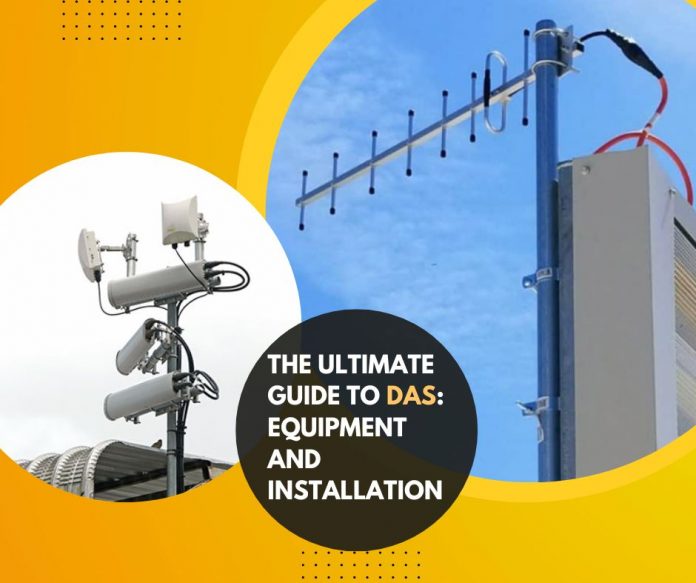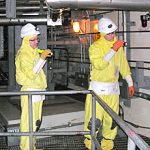Last Updated on May 23, 2024 by Ali Hamza
The mobile phone has become an essential device in our everyday lives. As a result, the need for good quality signal coverage in residential or corporate buildings has increased more than ever before.
From making calls to sending texts and browsing data, every activity requires good internet connectivity to avoid any workflow disruptions. Here, the solution to achieving all this requires effective wireless solutions. The most common part of these solutions to poor internet coverage that most people prefer comes to DAS. The DAS antenna solution, also known as Distributed Antenna Systems, is well known to provide good indoor coverage. Also, it enables benefits to businesses by ensuring quality communication and eliminating any dead spots in office buildings. Besides, the installation of a mobile phone booster is recommended for uninterrupted communication.
In this write-up, we will discover how DAS works, the benefits of installing them for businesses, and ways to integrate them.
What is a Distributed Antenna System?
Distributed Antenna Systems are a combination of antennas that enhance radio and mobile frequencies to deliver better and more reliable network coverage. Mainly, there are two types of DAS, namely Active and Passive DAS. A vast number of DAS antenna solutions are designed to be installed in the buildings. All SMBs to corporate enterprises utilize them to enhance mobile signal strength and ensure optimal workplace efficiency.
- Passive DAS: Coaxial cables are used in the passive DAS solution to transmit signals over the needed area. It could be on the building’s floor or inside an office. A passive DAS solution comprises multiple elements like connectors, cables, and splitters. All these work in combination to form a solution that distributes signals across the rooms and floors.
- Active DAS: Large areas can receive in-building coverage from this DAS technology. The radio transmission is changed into optical signals by fiber optic cables. This guarantees signal intensity at each antenna’s input, regardless of how far the antenna is from the requested source. Moreover, the potential communication quality issues are resolved.
- Hybrid DAS: Hybrid DAS is a blend of Passive and Active DAS solutions. It uses the components like splitters of Passive DAS to build a connection between the remote access units and antennas. Usually, Hybrid DAS is capable of transmitting a strong and reliable signal to each unit, no matter how far the signal source is located.
DAS Equipment and Installation Process
DAS solution installation is a step-by-step process. It highly depends on the type of DAS to be installed. Furthermore, it is vital to consider whether its installation is indoors or outdoors. But the equipment each distributed antenna system comprises is the same. These include:
Donor Antenna
The installation experts install the donor antenna in a location where it can easily catch the signals from the nearest cellular tower. This way, the signals delivered are of good quality. Furthermore, the donor antenna can receive signals on varying frequencies. As a result, all the possible interferences are reduced by mounting the antenna on the rooftop.
Repeater
The repeater unit component receives the signals transmitted by the donor antennas. It is usually mounted in the dead spots of rooms or where communications are more. It means the repeater amplifies the received signals and transmits them across the entire building or wherever it is requested.
Indoor Antennas
The indoor antennas are positioned throughout the entire structure. Further, the received signals are redistributed using the cables. These antennas are small in size. As a result, they perform the best job in delivering quality signals to the hard-to-reach building areas. However, remember that only the experts can determine the exact place where these antennas can function efficiently.
These components are present in all DAS solutions on the market. However, keep in mind that the components, positioning, and cabling vary from one another. Therefore, a skilled installation must do a site survey, choose the optimum location, and then install the appropriate Distributed Antenna System as necessary.
Benefits of Installing a DAS
- Ensuring quality communication requires proper functioning cellular networks. Besides, it is essential to bring the requested device as nearest as possible to the data transfer medium. Here, a Distributed antenna system comes as the ideal solution. It comprises compact antennas that are easy to install anywhere.
- DAS is capable of supporting multiple communication protocols. The best thing is it uses inexpensive cable or fiber optics to transmit the signals without compromising on strength or quality.
- Distributed Antenna Systems require one-time installation and no added configurations are needed afterward. Also, they do not need any maintenance.
- DAS minimizes interference in surrounding channels and boosts spectral efficacy.
- It offers simple and affordable network capacity expansion. Expanding the coverage area or installing it at the current location are two ways to connect new base stations.
Conclusion
Delivering a reliable internet connection comes with installation and other technical issues. Most of the time, the base stations of network service providers are situated far from the device locations. This hinders signal transmission and quality. Also, sometimes the building is constructed using signal-blocking materials that interfere with the signal transmission.
Luckily, with the DAS installation, overcoming all such issues becomes easy. The professionals are always there by your side to help install the required DAS solution. Thus, guaranteeing signal reliability and uninterrupted communication.
Apart from this if you are interested to know more about How to apply window tint dash cover then visit our Business category.























